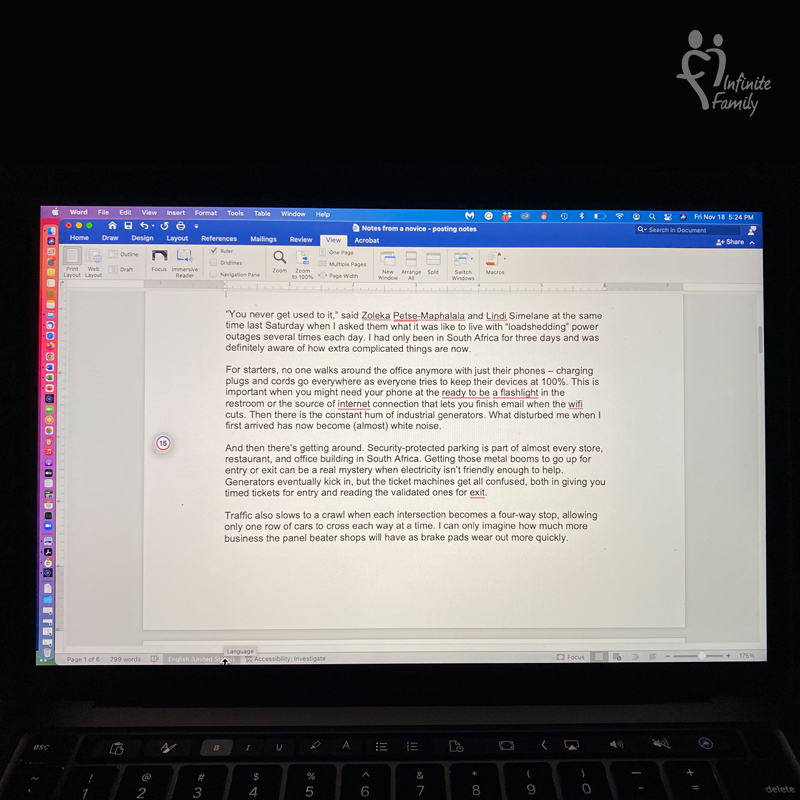
“You never get used to it,” said Zoleka Petse-Maphalala and Lindi Simelane at the same time last Saturday when I asked them what it was like to live with level 6 “loadshedding” power outages several times each day. I had only been in South Africa for three days and was definitely aware of how extra complicated things are now.
For starters, no one walks around the office anymore with just their phones – charging plugs and cords go everywhere as everyone tries to keep their devices at 100%. This is important when you might need your phone at the ready to be a flashlight in the restroom or the source of internet connection that lets you finish email when the wifi cuts. There is the constant hum of industrial generators all around. What disturbed me when I first arrived has now become (almost) white noise.
And then there’s getting around. Traffic slows to a crawl when each intersection becomes a four-way stop, allowing only one row of cars to cross each way at a time. I can only imagine how much more business the panel beater shops will have as brake pads wear out more quickly. And don’t count on running quick errands. Security-protected parking is part of almost every store, restaurant, and office building in South Africa. And don’t count on running quick errands. Getting those metal booms to go up for entry or exit can be a real mystery when electricity isn’t friendly enough to help. Generators eventually kick in, but the ticket machines get all confused, both in spitting out timed tickets for entry and reading the validated ones for exit. It’s a regular reminder to take a deep breath and chill.
As if getting around and getting home aren’t stressful enough, my poor teammates spend crazy amounts of time planning meals and figuring out how to store food until it’s needed. It’s amazing to me to imagine how much collective creativity and ingenuity is being used conjuring workarounds just to get through what is sure to be at least 2-3 years of uncertain electricity service delivery. Sadly, this creativity and ingenuity should be focused on solving long-term systemic problems like improving South Africa’s education system. Most of us in the NGO industry always try to find the “glass half full” response underscoring South African’s “resilience” in the face of adversity. But the United States Ambassador Reuben Brigety, III was more on point when he asked me earlier today, “Resilience, but at what cost?” Everyone has an answer, but no one wants to say it out loud.